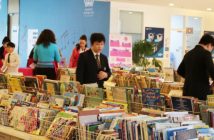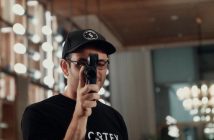Last week internationally renowned author Andrew Killeen wowed pupils at Yew Chung International School (YCIS) with an unforgettable workshop –
I’m not going to get away with this, am I? You can see my name at the top of the blog. OK, it was me. So this is a report of an author visit from the author’s point of view.
Since my fiction is mostly aimed at adults I’d written a new story to share with the children: “The girl who turned her brother into a balloon.” This is the tale of Lydia Biscuit and her annoying little brother Bernard, who became so annoying that she accidentally turned him into – well, I think you get the idea. Hilarity would ensue, or so I hoped.
It’s always unnerving to reveal new material for the first time, and when your audience is a roomful of expectant 7 and 8 year old kids, the temptation to bolt for the door is strong. But I took a deep breath, and began by asking them if anyone had an annoying little brother or sister. Hands shot up everywhere. Some were even prepared to admit to being annoying little brothers and sisters. The usual complaints emerged: snitching, hair pulling, making maddening and repetitive noises…
So the subject matter was a hot issue for Year 3 (grade 4). But would they find it funny? The first time I did Bernard’s annoying little dance it was met with stunned silence. I think they were perhaps unprepared for the sight of a grownup ready to make quite such a fool of himself in public. As the story went on though, the laughter came, to my enormous relief; otherwise it would have been the longest fifteen minutes of my life.
After Bernard had been turned back into a boy and brought safely home, we talked about what makes a story, and what makes characters interesting. The children turned out to know more about narrative structure than most of the adult groups I’ve worked with, and terms like “story arc”, “crisis” and “hero’s journey” were thrown around with abandon. The Q&A brought a range of questions from the familiar (“when did you start writing?”, “where do you get your ideas from?”) to the startlingly direct (“how much do you get paid for a book?”)
After repeating the performance with four other groups, I was exhausted. (I don’t know how teachers do it all day, every day. Hats off to them.) However it was gratifying to have children tell me how much they enjoyed the story, that they’d been inspired to write their own stories, even asking for my autograph.
The acid test though came with my own children’s response. Noah gave me a typically laid-back “thumbs up”, but Joseph, a sterner critic, was unusually huggy. Was he clinging to me out of embarrassment? It turned out that he’d heard two kids on the playground talking about how cool I was.
I hugged him back. It seemed unlikely this would ever happen again. We silently agreed to make the most of it.
Photo: Rodney Hope




